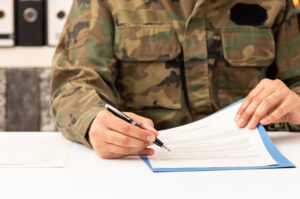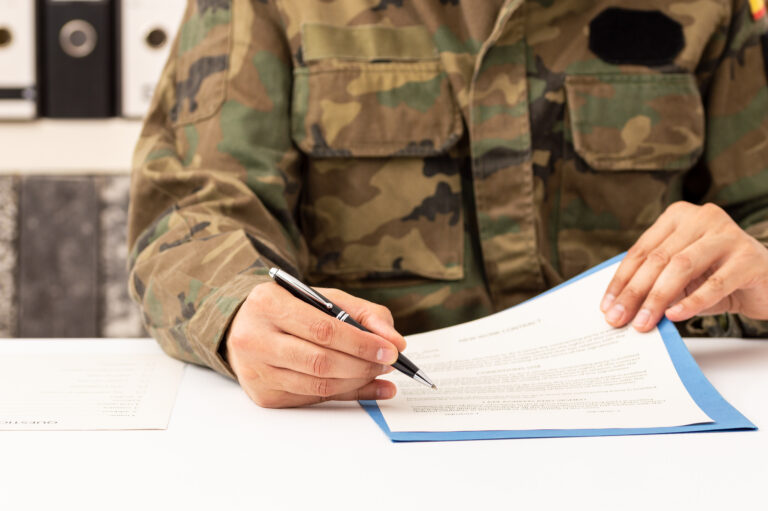DoD CAC Card for Access to Classified Information
The Department of Defense (DoD) Common Access Card (CAC) is a smart card issued to uniformed service personnel, DoD civilian employees, and eligible contractors. It serves multiple purposes, from visual identification to providing access to secure DoD computer networks and facilities.
What is a CAC Card?
The CAC card is an essential component in the DoD’s efforts to keep information secure. It contains embedded chips and biometrics which store personal identification and authentication data. This ensures that only authorized individuals can access classified information and DoD networks. It’s not just a simple ID but a tool for ensuring national security.
Why is the CAC Card Important?
With growing cybersecurity threats, the need for robust security measures is critical. The CAC card implements multifactor authentication, which goes beyond just a username and password. Users often need to provide a PIN along with the physical card. This layered security reduces the risk of unauthorized access to sensitive information.
How to Get a CAC Card
To obtain a CAC card, eligible personnel must go through the enrollment process at a Defense Enrollment Eligibility Reporting System (DEERS) location. They must present valid identification and complete the necessary paperwork. Once approved, the card is issued, and the user must set a personal identification number (PIN) to activate it.
Using the CAC Card
The card is used in conjunction with CAC readers, which can be connected to computers or embedded in security checkpoints. When accessing a computer system, the user inserts the card into the reader and types their PIN. Similarly, physical access to secured buildings may require the card to be swiped or scanned.
Accessing Classified Information with a CAC Card
Classified information is categorized based on increasing levels of sensitivity: Confidential, Secret, and Top Secret. Access to such information is tightly controlled and requires clearance at appropriate levels. The CAC card provides the necessary credentials to access classified systems but must be used correctly and responsibly.
Multifactor Authentication
The CAC card supports multifactor authentication (MFA), often requiring something you have (the card), something you know (the PIN), and sometimes something you are (biometrics). This multifactor layer makes it significantly more difficult for unauthorized individuals to gain access.
Security Features of the CAC Card
- Embedded Encryption
- Electronic Signatures
- Digital Certificates
- Photographs and Personal Data
These features work together to confirm the identity of the cardholder and to protect against fraudulent activity. The CAC card’s data is encrypted, making it challenging to duplicate or tamper with.
Lost or Stolen CAC Cards
If a CAC card is lost or stolen, it must be reported immediately to the issuing authority. This prompt action prevents unauthorized use and ensures that a new card is issued. The old card is deactivated, rendering it useless.
Training and Familiarization
Personnel issued a CAC card need to undergo training to understand its use and security protocols. This includes how to handle the card properly, what to do in case of loss, and the importance of protecting their PIN.
Best Practices for Handling a CAC Card
- Keep it secure at all times
- Do not share your PIN
- Avoid bending or damaging the card
- Regularly update your PIN
- Report any suspicious activity
Following these practices ensures the integrity of the card and minimizes the risk of it being compromised.
Revoking and Reissuing CAC Cards
Cards may need revocation for various reasons, including changes in employment status or suspected compromise. The reissuance requires re-verification of identity and clearance levels. This ensures that only eligible individuals maintain access to secure systems.
Technological Evolution
The CAC card continues to evolve, incorporating new technologies to enhance security. This includes better biometrics, more secure encryption algorithms, and improved card materials. These advancements are crucial to stay ahead of emerging threats.
Benefits Beyond Security
While its primary role is security, the CAC card also streamlines administrative processes. It can be used for signing documents electronically, accessing various DoD services, and even in some financial transactions within military installations.
Mandatory Compliance
DoD mandates strict compliance with CAC protocols across all branches. Non-compliance can result in disciplinary measures, emphasizing the card’s importance. Regular audits and checks are conducted to ensure adherence to security requirements.
Transparency and Accountability
The issuance and usage of CACs are documented meticulously. This transparency ensures accountability and traceability, allowing the DoD to investigate and address any lapses in security promptly.
International Implications
While primarily used within the United States, the CAC card’s principles have influenced international security protocols. Allied nations often adopt similar technologies to enhance their own security measures, creating a unified approach against global threats.
User Responsibility
Every cardholder bears responsibility for the card’s security. Neglect or misuse can have severe implications for national security. Users must remain vigilant and proactive in protecting their credentials.
Supporting Infrastructure
The infrastructure supporting CAC card use includes secure servers, encrypted communications, and trained personnel. Maintaining this infrastructure is a constant effort, requiring updates and vigilance against potential vulnerabilities.
Challenges and Solutions
Adopting the CAC card posed several challenges initially. These included technological limitations, user resistance, and administrative burdens. Over time, these were addressed through improved tech, better training, and streamlined processes.
Future of CAC and Security
The future of the CAC card points towards integration with emerging technologies. This includes potential use with mobile devices, enhanced biometric authentication, and even blockchain for secure data verification. These developments aim to bolster security and ease of use.
FAQs
- Q: What do I do if I forget my CAC PIN?
A: Visit any DEERS/RAPIDS station to reset your PIN. - Q: Can I use the CAC card for access outside DoD networks?
A: The primary use is within DoD systems; external use is limited. - Q: Is the CAC card waterproof?
A: It can withstand some exposure but should be kept dry to ensure longevity.
“`






